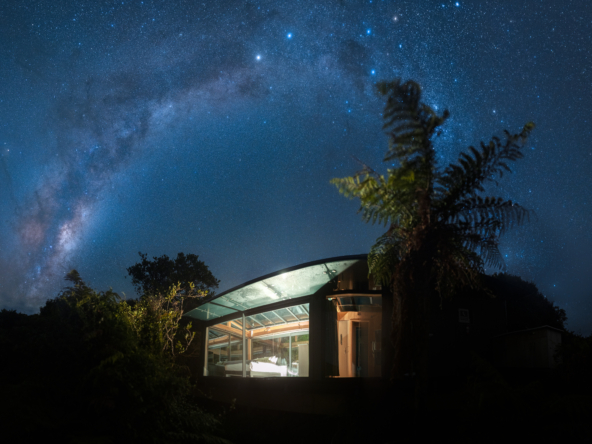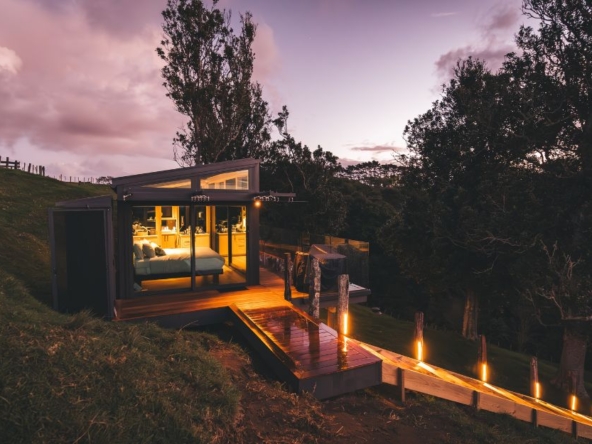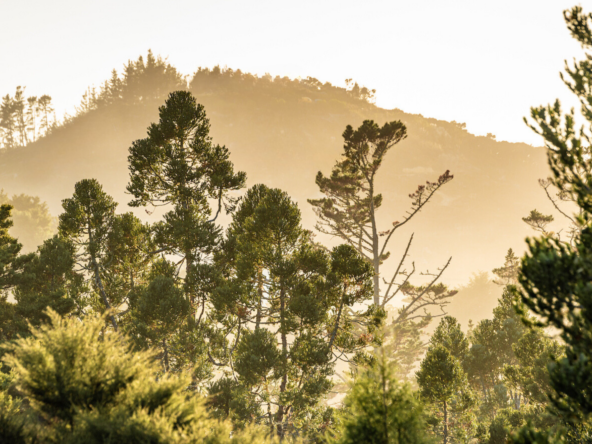By Charlie Williamson
For a family that has for three generations changed with the times, it seems no surprise they have found success in their latest venture into high-end tourism.
Tucked away in the hills of Te Horo, a small rural community on the Kāpiti Coast, is one of the more enterprising family farming and horticultural operations around.
And although you could be forgiven for being overwhelmed by the diversity of the operation at Stanmore Farm, Kate and Tim Gibbs and their son Harry have ensured everything works together in harmony on the 48ha block.
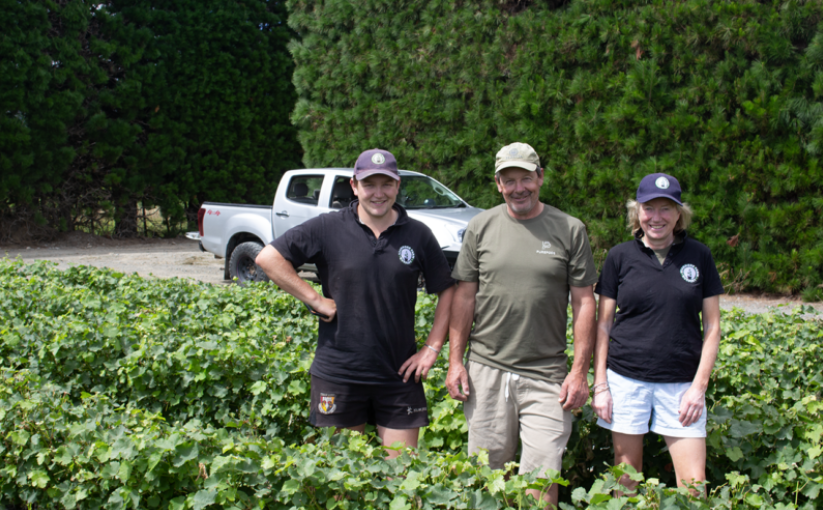
Farm practices
The family are growing grafted grapevines for New Zealand’s best vineyards, supplying fresh and frozen berries to local and domestic markets, farming a small herd of Hereford cattle and lambs to assist with fallow cropping, and more recently, have begun providing five-star eco-accommodation overlooking the stunning Kāpiti Coast.
The premium grafted grapevines, however, come first, and it’s been that way since the 1980s on Stanmore Farm.
“My dad started this all as a farm back in the early ’70s, during which there was kiwifruit, raspberries and a Hereford stud – which was run during the weekends as he was working as a doctor in Wellington during the week,” Kate says.
“But then during the horticultural boom of the ’80s in this area it intensified, and I was a viticulturist in the wine industry and I came home and didn’t want to see it become a vineyard because the soils are too good.”
The right climate for grafting grapevines
Grafted grapevines were the right fit as Te Horo sits in a mainly maritime climate, tucked beneath the Tararua ranges. In addition to having some of the best soils in the North Island, the farm is frost free.
“Even though we’re not near our customers, we quite like that we’re growing on this fertile soil with this great climate. So we produce big, chunky, healthy plants, which then go out to quite stony bony areas sometimes,” Kate says.
“And we’re now having clients order our grapevines up to two years in advance because we’re selling out.”
A grafted grapevine, Kate explains, is simply a one-year-old, dormant grapevine.
“So the grapevines are growing all summer, and then when it drops its leaves we bring it into the shed, put them across our tables, clean them up, chop them back at the top and bottom, ensuring they meet the stringent quality standards.
“From there they are grouped into bundles of 25, put in boxes and sent away for planting on vineyards.
“Around 85% of the grafted grapevines we produce are sauvignon blanc, and the vast majority are being sent to the Marlborough region, although we do also send a large number to all the other main grape growing regions, like Hawkes Bay.”
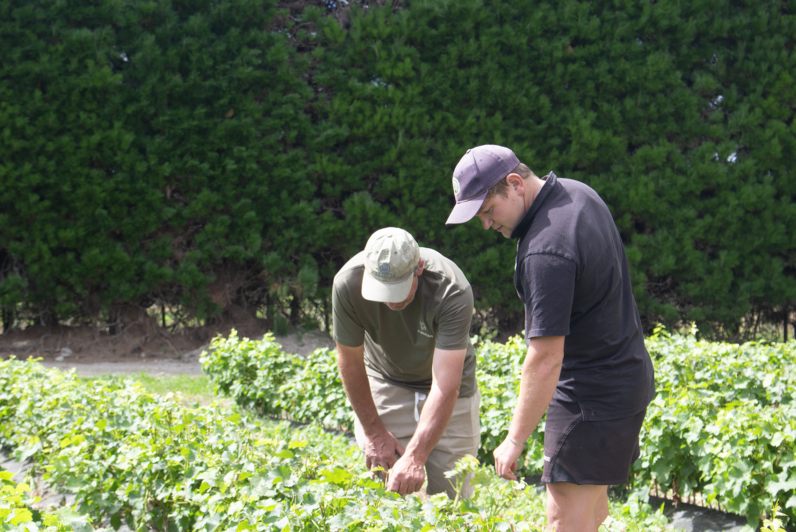
The Gibbs don’t call themselves regenerative farmers, but they say they’ve been using regenerative farming practices right back to when Kate’s father had the reins.
They do this by having the nurseries on rotation, and while land is not being used it is planted in a variety of crops and stood down for 2-3 years – which is where the livestock come into the equation.
“Because we have such high-quality soils in Te Horo, one of the big things here is we fallow our land to keep soils healthy for the nursery,” Kate says.
“And so we use different crops like mustards and lupins – mustards to clean up the soil pathogens and lupins to feed the nitrogen.
“But the important part of that system is that we use animals as well. So we’ll have cows in there keeping the grass down and feeding the soil, and we’ll also run lambs in that system some years too.
“It’s a cover crop system. So we’re very cognisant of regeneration and looking after soil without officially being regenerative farmers – but that’s just because it’s what we’ve always done. It’s not new to us, I mean, it’s something my dad believed in.”
Staffing during the ‘Off Season’
Because of the seasonal nature of growing grapevines, and the significant downtime between harvests, there have been issues in the past with keeping non-seasonal workers employed all year round.
Harry, who is now heavily involved in the day-to-day running of the operation – including the employment of both their permanent and seasonal staff – says this was a significant reason for their decision to grow blackberries on the property.
“The main thing with the berries is it gives us an opportunity to keep those good staff employed all year round. That is definitely the main driver,” he says.
“Instead of having six months’ work and then having to get rid of 3/4 of our staff every year, we can retain a good chunk of them as permanent.”
He says it also gives “those people that are doing contract work an opportunity to work basically most of the year picking berries in the summer and cutting rootstock in the winter”.
“And because of this we can usually offer them around 10 months work a year, so it’s great to be able to keep those good staff around.”
The berries are exported fresh and frozen to local and Auckland markets, are picked fresh on weekends by locals and visitors, and used as one of the main ingredients for a local craft brewery’s berry beer and the traditional Polish liqueur distillery on the property.
“So there’s a Polish liquor company out the back called Barlovska, making three liqueurs, and one of them, which uses our blackberries, won the top trophy in the New Zealand Spirit Awards last year,” Harry says.
The brewery that uses the berries takes other fruit from Stanmore as well, making a “fresh, seasonal pear beer using pears from a little orchard we have on the farm”.
“It’s convenient, but we also think it’s really important because it’s like that whole thing about being local, which more and more people care about at the moment.”
Diversifying into luxury tourism with PurePods
In recent years the Gibbses were looking at options to diversify their operation into tourism, given their proximity to Wellington and the stunning views out to Kāpiti Island and the Tasman Sea.
After evaluating several possibilities, Tim says, they decided on the PurePod option – a five-star eco-accommodation model in terms of which the company installs the accommodation pods all over NZ in 50/50 partnerships with farmers and landholders.
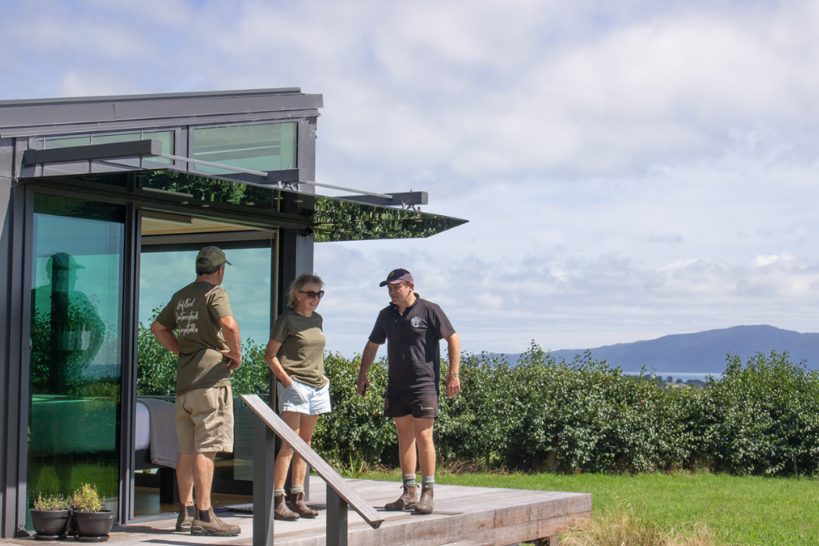
“If you do the glamping sort of thing, you have to market it yourself, fill it yourself,” Tim says.
“If you’re running it as a business it can become a huge headache. And the thing is because this is high end, you’re probably getting the same return from doing half the work.”
The farm’s Purepod runs on solar energy, with a back-up diesel generator, and has a built-in aerated wastewater treatment system that mimics the way nature breaks down waste, making for a complete off-the-grid experience.
It’s built almost entirely of glass, allowing for sweeping views of the coast, and is loaded with state-of-the-art technology used to monitor everything from gas levels to the internal temperature – another reason Tim says it was a no-brainer.
“There are three levels of thermometers in the building here to monitor the different levels. If something goes wrong they always have their finger on the pulse.”
The PurePods company “has a local plumber, electrician, these sort of things all set up and on call who know the system”.
Tim says there were some concerns around signing the contract for the PurePod in the middle of covid, but the pod attracted fair numbers of locals and now it’s full most of the year.
“We’re now booked out for something like 75-80% of the year, with people coming out of places like New York City from a winter so they just love it,” Tim says.
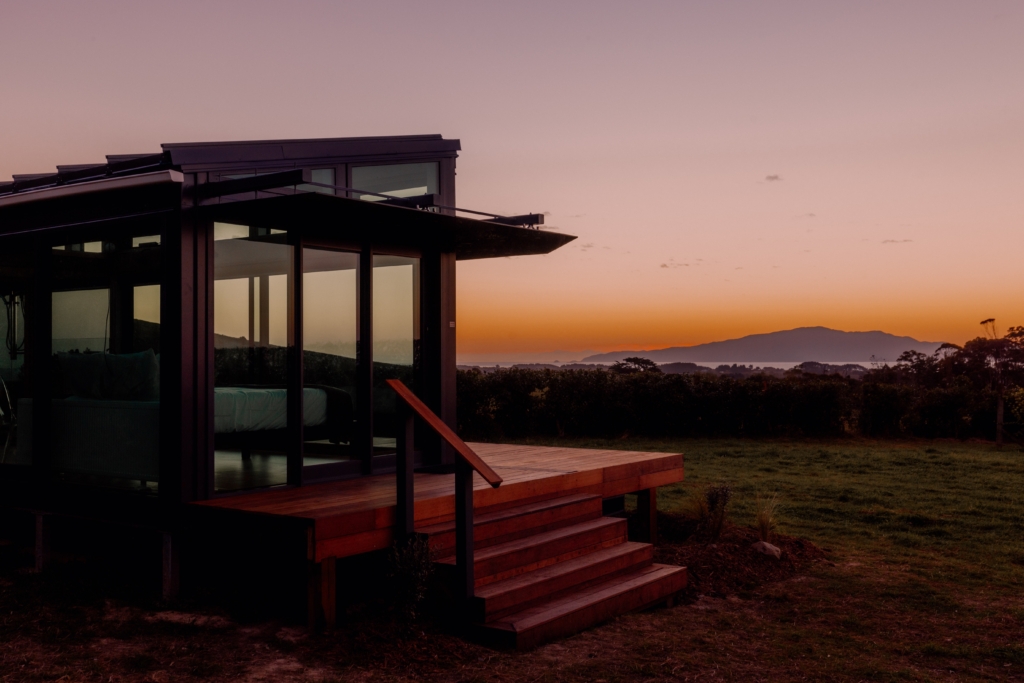
As well as allowing the Gibbses to diversify their income streams, the PurePod is helping with succession planning for the farm, providing an off-site income stream for Kate and Tim when Harry, as he notes, eventually buys them out.
“We’re also locked into a 30-year plan, so 100% I’m going to be running it [the PurePod] at some point. But the main thing that comes into it at the moment is that it gives Mum and Dad options.”
But for now, the grapevines will still be growing, and the berries will still need to be picked as the third generation gears up to continue the family tradition on Stanmore Farm.

